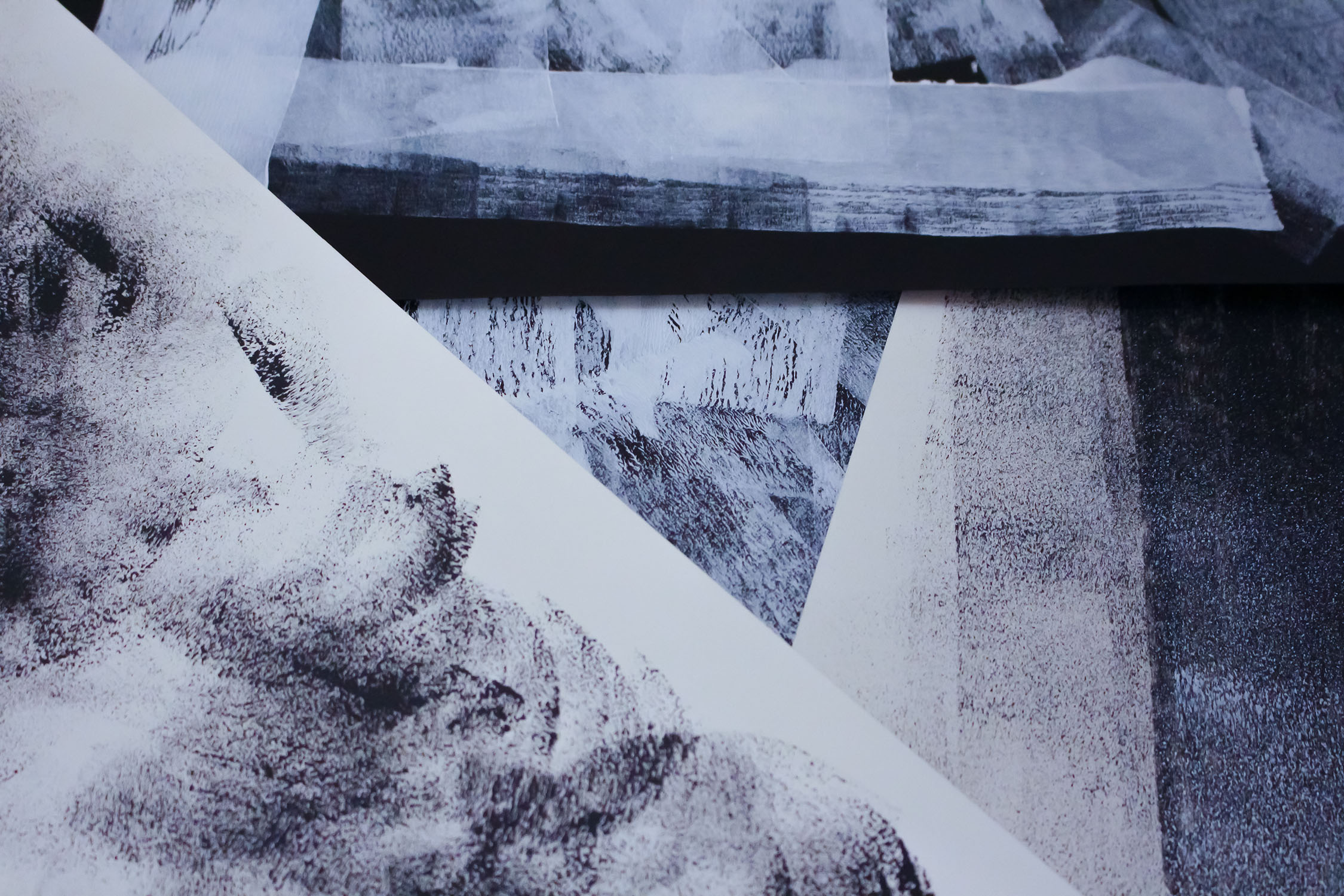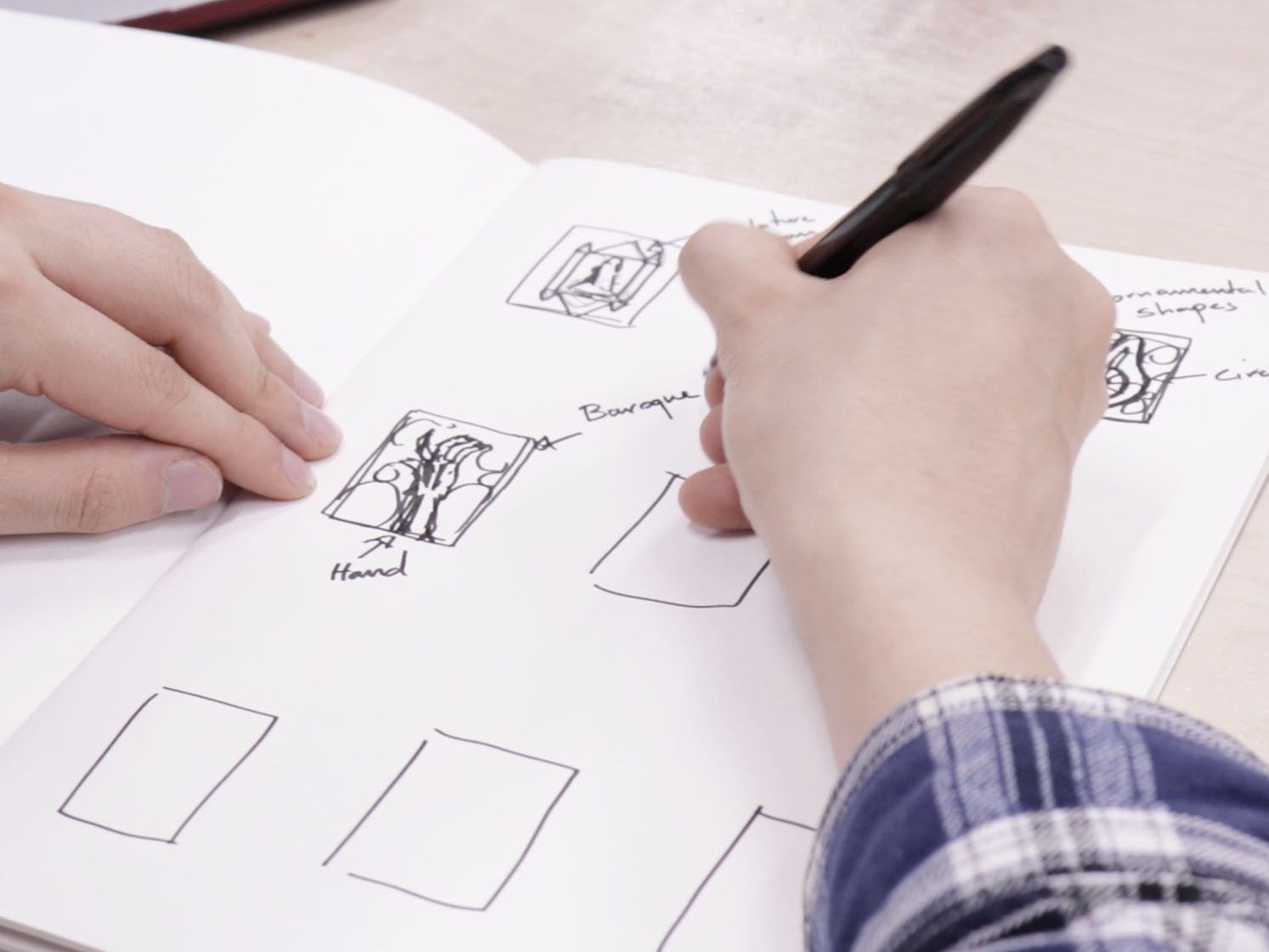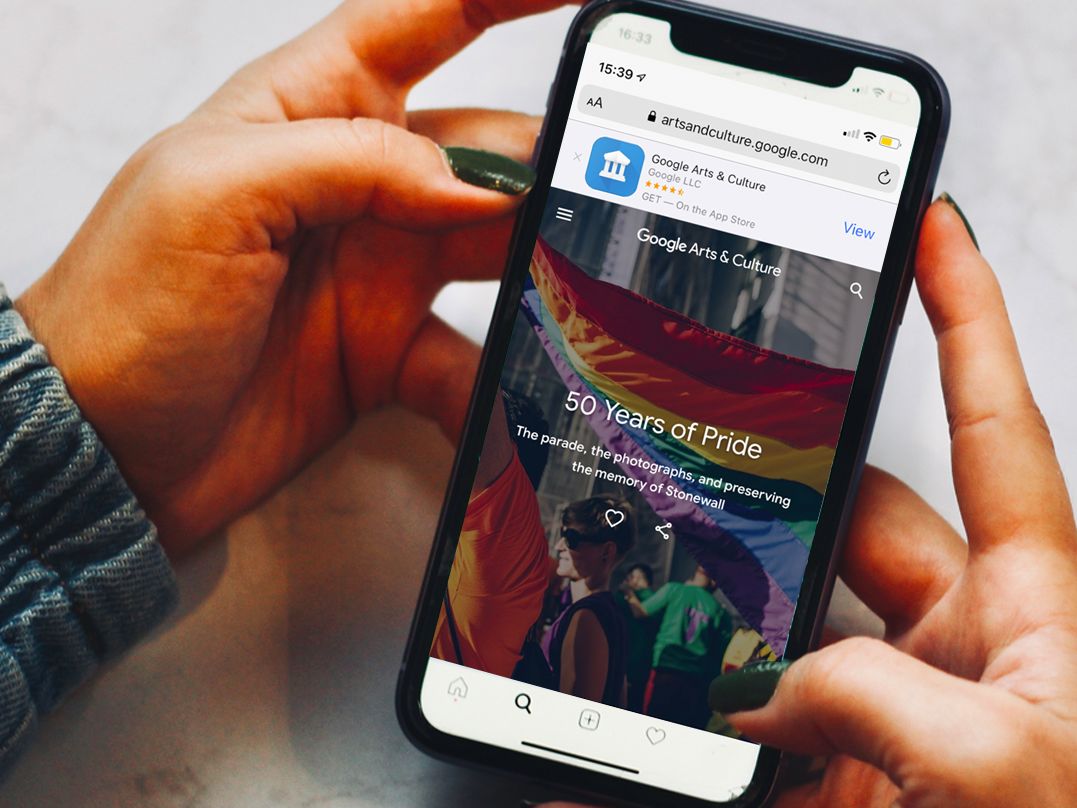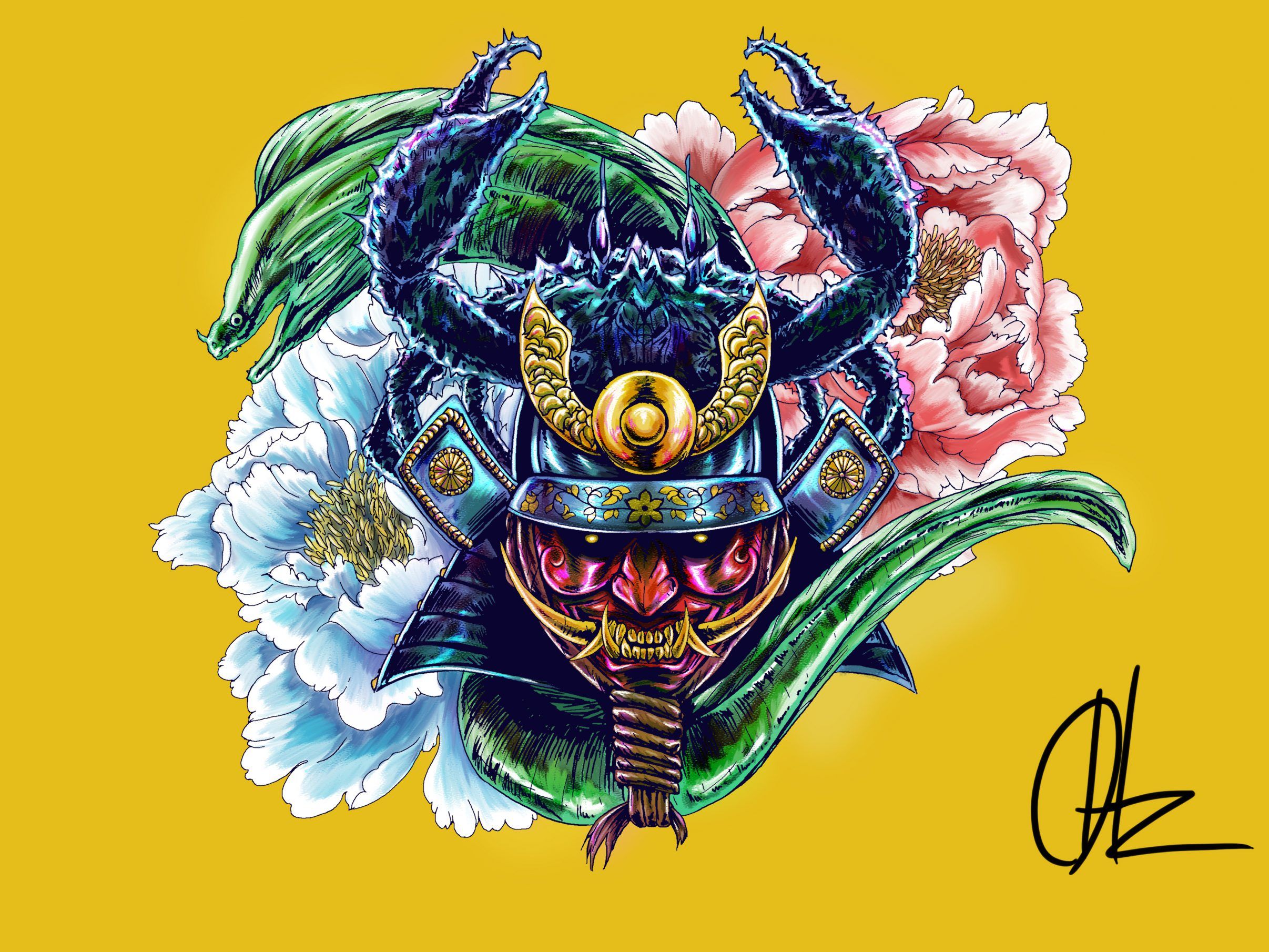An illustration is the visual communication of an idea that typically links up with published media, such as: posters, flyers, magazines, books, teaching materials, animations, video games and films. As an illustrator, I usually require a variety of materials and skills to create concepts to eventually get to a final outcome. These keywords will give a brief overview of the language that is associated with creating an illustration.
Traditional art mediums

Art mediums are the materials that are used to produce artwork, whether that’s as a concept, or in finalised form. For example, most illustrators use a pencil as the primary medium in their sketchbook to roughly build ideas, which is then either inked or painted over. Some illustrators use pencils with blue lead as the initial sketch – this is because blue lead will not appear in a scan. This technique was initially used by comic book artists; however, it has now been picked up by a lot of digital artists.
There are also different pen types which provide different effects in an illustration. For example, a Sakura Pigma Micron ‘fine liner’ pen is popular for capturing and finalising the fine details in illustrations. Meanwhile, a Pentel brush pen can fill black spaces quickly and also capture texture with quick brush strokes. With paints, watercolour and acrylic is used to capture vivid colour and texture, since both dry very fast compared to oil paint.
Digital art medium
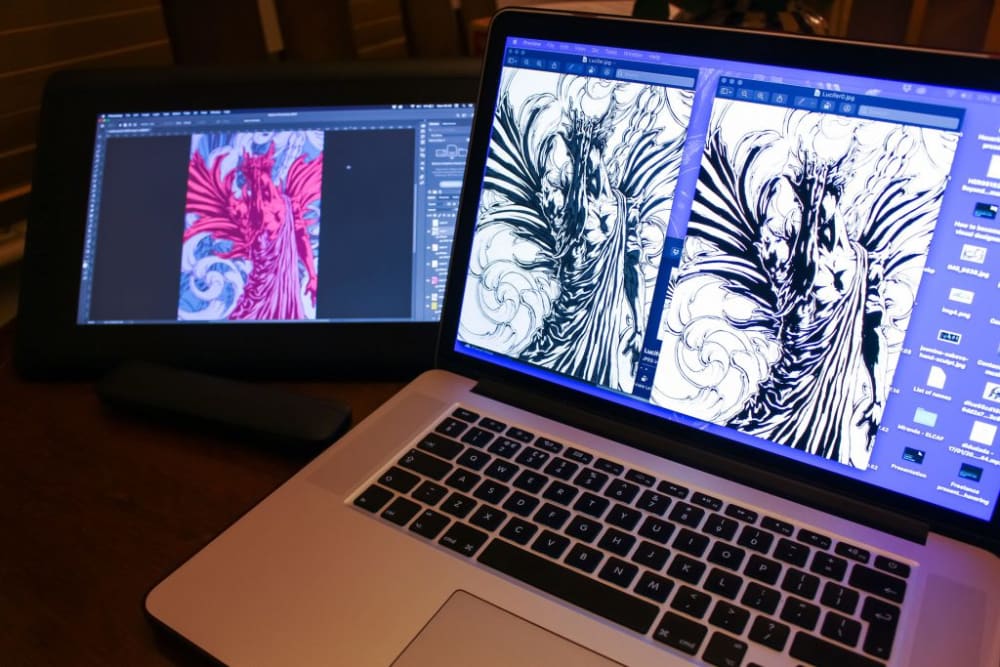
Another form of art medium is the digital art medium, which is a recreation of the traditional version, through digital software and hardware. Adobe Creative Suite is the perfect example of having a variety of programs that help users create and edit work. Photoshop gives users the ability to recreate paintings and edit photos. Adobe Illustrator also has this ability; however, it specialises in using vectors (programmed anchor points, lines and frames) to produce clean art that can be scaled infinitely without losing any image quality. Some artists mix and match traditional art mediums with digital art mediums – for example, an ink drawing on paper which is scanned into Photoshop, then later coloured in digitally. Some illustrators also use tablets to digitally draw their illustration in real time.
Reference (linked to research)

When attempting to find ideas and inspiration, artists will not only rely on their imagination but, will gather ideas from a reference source. These references come in two main forms, primary and secondary, which can also be considered forms of research. Primary research is collected by yourself; these can be surveys, interviews and observations. An example of primary research is photographing faces – the illustrator can then reference these to learn how to draw a face.
Secondary research is the analysis and study of existing research. An example is studying books or watching videos on how faces are constructed, to then learn how to draw a face. To have excellent references, illustrators will use both primary and secondary research to inform and develop an idea.
Thumbnails
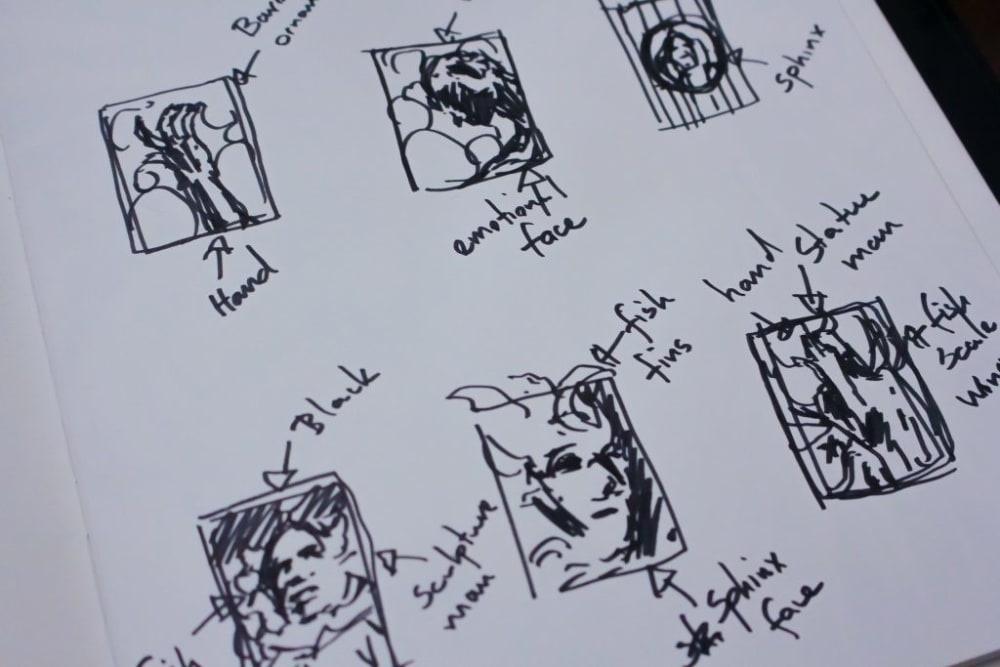
When creating concepts and ideas for a project, it can be quite mentally draining. Artists sometimes have a terrible habit of investing a lot of time on one single concept. The habit of creating a perfect drawing from the get-go can be detrimental, time-wasting and stop further idea generation. To avoid this issue and embrace rough work from the start, artists use thumbnails to generate ideas. A thumbnail is a miniature version of whatever you are thinking of drawing, usually drawn out as a box often an inch or two long and wide. Any traditional art medium can be used in a thumbnail and they can be fast, rough drawings, with no corrections (no erasing). Working with thumbnails helps the artist quickly compose small visuals with big ideas, before deciding how to layout the final image.
Concepts

Concept art is essential since this is the visual plan, idea, intention and overall working out of an image’s composition before the final outcome. Building up concepts can be tricky, but with the right planning and references, they should be able to come out of the artist quite easily. Analysing the primary and secondary research will give a good basis for initial ideas. Certain questions are asked during this process such as what colours am I going to use? Is the line art going to be heavy? What medium is best suited for this image? Is it a simple or complicated design? Any medium can be used to create concept art, and they commonly start out as lines or scribbles that progressively become refined. Concepts are a great way to see the progress of your work, and artists can always look back to see how they got to a specific place in their illustration.
Line weight
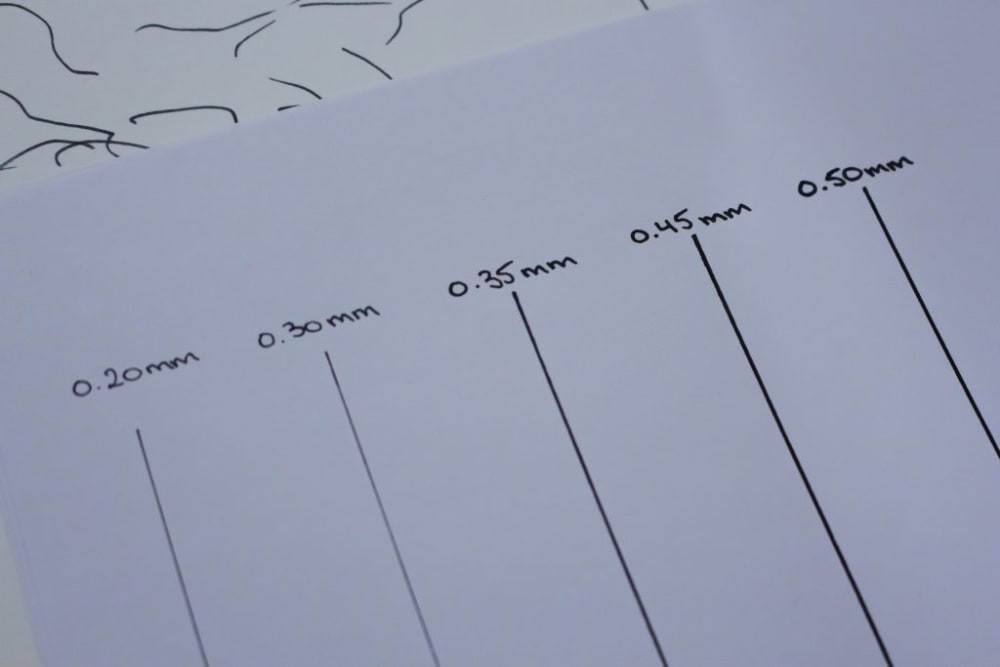
When an illustrator draws, they take into consideration how thin or thick the lines are in their drawing; this is called line weight. Line weight is an essential part of constructing an illustration, because it conveys a depth of field, expression and helps highlight important sections of the illustration. However, it can also be seen as the strength, heaviness, or darkness of a line. Without this technique, most drawings will feel flat and have no depth of field, meaning certain elements in the image won’t pop. Pencils have a variety of strength and thickness to them, from 8H being the lightest to 8B being the darkest. An artist who uses pencil will interchange the intensity of their pencils to create perspective, shadows and depth. Pens also have the same function, starting from the smallest nib at 005mm to 08mm at the largest. Mixing and matching different line weights with any medium will greatly improve an illustration, especially when trying to convey tones and shadow.
Textures
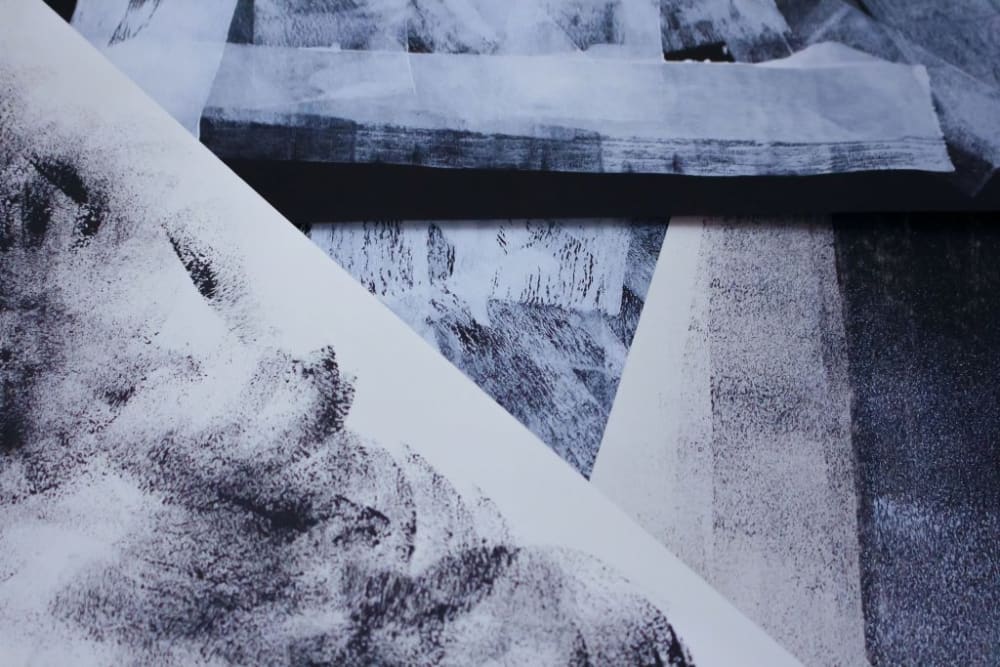
Textures are used to give illustrations the appearance and feel of a particular surface. Texture can add more depth, detail and emotion to the artwork. Some artists produce artwork with consistent texture throughout a singular piece, and others only use texture within particular areas of their project. Textures can be made traditionally with paint, inks and pencils or they can be photographs and custom effects that are used in digital mediums. For example, to design a rock monster I would make sure it had some form of skin texture that resembled rocks and minerals to add more realism and depth. Perhaps paint or plaster could be used to create this texture, or I could digitally overlay a photograph of a rock surface onto the design. More frequently, artists use subtle textures to help complete a finished piece. For example some digital artists use a very faint grain texture throughout their work; this cancels out the flat colours that are usually associated with digital illustrations and adds a realistic paper finish.
